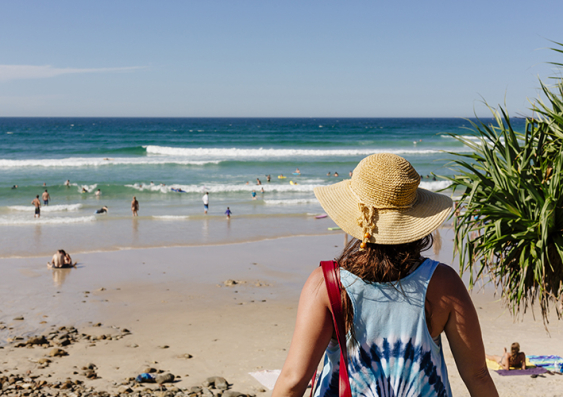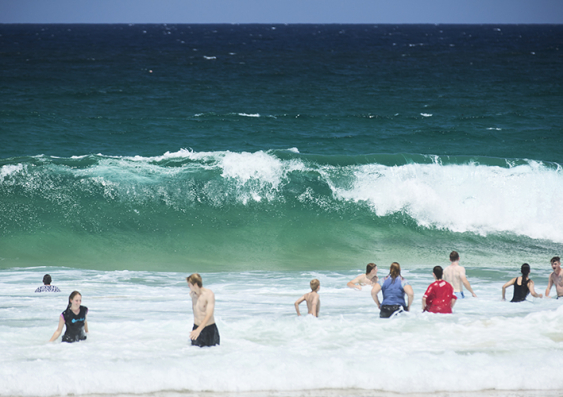Debate erupted this week over the growing number of beach tents, or âcabanasâ, proliferating on Australian beaches. The controversy, which , was fuelled by Prime Minister Anthony Albanese who declared it was ânot onâ for beachgoers to reserve a spot on the sand by erecting a cabana then leaving it vacant for hours.
Albanese Nineâs Today show âeveryone owns the beachâ and staking a claim on the sand was âa breach of that principle, reallyâ.
Other critics deem beach cabanas an eyesore. And lifeguards say obscure their view of the water, which poses a safety risk.
Beach cabanas do, however, serve . They provide some and, from a recreational perspective, can enable people to spend longer at the beach on hot days than they might have otherwise.
Iâm a member of the University of NSW , and Iâve worked with local councils and national parks to address health and safety issues on beaches. So letâs look at how to strike the right balance between personal convenience and public safety when using a cabana.
A fair go for all?
In years past, Aussies came to the beach with a towel and maybe a book, stayed a little while then left.
But more recently, the use of beach tents and cabanas has grown. Itâs likely the result of Australiaâs , and a rising awareness of the dangers posed by sun exposure.
These days, itâs not uncommon to visit a popular beach in summer and find a village of cabanas stretching as far as the eye can see.
Itâs great to see so many people using the beach. Beaches and oceans are , though they come with inherent dangers.
And of course, in Australia the beach is free for all who wish to use it. Itâs an approach in line with our , in which everyone gets a âfair goâ. Here, beaches are a place to be shared, no matter what your income or social status.
The approach contrasts to many destinations in Europe, the United States and elsewhere, where large sections of beaches are reserved for private use. At Waikiki beach in Honolulu, for example, people to hire an umbrella and chairs, and a place on the sand for the day.
To some naysayers, cabana use in Australia that the beach is for everyone. They question whether people should be allowed to mark out beach territory no-one else can use. Thatâs why in 2020, a bid by a private company to introduce paid cabanas on Sydneyâs Bondi Beach .
Cabanas bring practical challenges, too. They represent an unplanned influx of temporary infrastructure into busy public spaces. Left unchecked, they could cause pedestrian congestion and become a flashpoint for disagreement between beachgoers.
The current debate may prompt Australian beach authorities to consider bringing in cabana regulation, similar to whatâs in place for .
In the meantime, here are five tips for safe and fair use of beach cabanas:
1. Placement: Erect your cabana at the back of the beach and away from lifeguard towers or lifesaver tents to avoid obstructing lifeguardsâ views. Clear sightlines to the water are essential for ensuring timely emergency responses. This positioning also leaves space closer to the water for other beachgoers, including children playing at the waterâs edge.
2. Tying down: Secure your cabana firmly in the sand to prevent it from being blown away by strong winds. Flying cabanas are a danger to other beach users, potentially causing injuries and damage to property.
3. Spacing: Avoid overcrowding by maintaining two to three meters between structures. This ensures free movement and accessibility for all beachgoers, and ensures families and groups can enjoy the beach without feeling cramped. Also, stay within the boundaries of your cabana and donât claim territory outside its boundaries.
4. Emergency access: Keep pathways and access points clear at all times. This is crucial for lifeguard vehicles, ambulances and surf rescue teams. Unobstructed access can make the difference between life and death in an emergency.
5. Common sense: As with using any shared space, consider the needs of others and apply common sense. How would you feel if someone set up a structure right in front of you, blocking your view of the waves or ruining your vibe? Or if you or a loved one needed medical attention on a beach, would you want an ambulance crew obstructed by an unbroken line of tents?
Looking ahead
In the past, some have called for . But the structures appear here to stay â and thatâs not a bad thing. Skin cancer than any other cancer, and the Cancer Council .
Itâs important to note, however, that cabanas do not . If youâre at the beach all day, even under a tent.
When it comes to your next visit to the coast, by all means pack your cabana. But make sure you use it carefully and responsibly, so everyoneâs day at the beach is safe and enjoyable.![]()
, PhD Candidate, ĖĮÐÄlogo Beach Safety Research Group + School of Population Health,
This article is republished from under a Creative Commons license. Read the .







